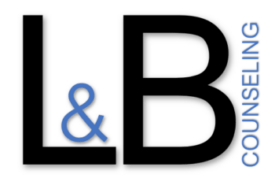Depression
What Can I expect in Counseling?
Our therapists use fundamentals of neuroscience and cognitive behavioral therapy. These two approaches will help you understand and work through the issues that are impacting your life. The therapist’s role is to listen to you, provide feedback and then work with you to develop coping strategies. CBT (cognitive behavior therapy) is a type of therapy that works to alter common patterns of negative thinking. Your therapist will teach you how to leverage dopamine, adrenaline, serotonin and oxytocin while reducing the negative impacts of cortisol. We do this by providing some psychoeducation about neurochemicals and tools to reduce some of the impacts of a depressed brain. To evaluate your progress, we have developed an app that allows for you to track your moods and feelings. These metrics will help your therapist determine the best course of counseling needed for the most successful outcome.

What is depression?
Everyone feels sad or low sometimes, but these feelings usually pass with a little time. Depression—also called “clinical depression” or a “depressive disorder”—is a mood disorder that causes distressing symptoms. These symptoms can affect how you feel, think, and handle daily activities, such as sleeping, eating, or working. To be diagnosed with depression, symptoms must be present most of the day, nearly every day for at least 2 weeks.
What are the different types of depression?
Two of the most common forms of depression that people seek counseling for are:
- Major depression-having symptoms of depression most of the day, nearly every day for at least 2 weeks that interfere with your ability to work, sleep, study, eat, and enjoy life. An episode can occur only once in a person’s lifetime, but more often, a person has several episodes.
- Persistent depressive disorder –having symptoms of depression that last for at least 2 years. A person diagnosed with this form of depression may have episodes of major depression along with periods of less severe symptoms.
Some other forms of depression are:
- Perinatal Depression: Women with perinatal depression experience full-blown major depression during pregnancy or after delivery (postpartum depression).
- Seasonal Affective Disorder (SAD): SAD is a type of depression that comes and goes with the seasons, typically starting in the late fall and early winter and going away during the spring and summer.
- Psychotic Depression: This type of depression occurs when a person has severe depression plus some form of psychosis. Examples would be having disturbing false fixed beliefs (delusions) or hearing or seeing upsetting things that others cannot hear or see (hallucinations).
You can learn more about these disorders on the National Institute of Mental Health (NIMH)’s website (www.nimh.nih.gov).
What are the signs and symptoms of depression?
Sadness is only one small part of depression and some people with depression may not feel sadness at all. Different people have different symptoms. Some symptoms of depression include:
- Persistent sad, anxious, or “empty” mood
- Feelings of hopelessness or pessimism
- Feelings of guilt, worthlessness, or helplessness
- Loss of interest or pleasure in hobbies or activities
- Decreased energy, fatigue, or being “slowed down”
- Difficulty concentrating, remembering, or making decisions
- Difficulty sleeping, early-morning awakening, or oversleeping
- Appetite and/or weight changes
- Thoughts of death or suicide or suicide attempts
- Restlessness or irritability
- Aches or pains, headaches, cramps, or digestive problems without a clear physical cause and/or that do not ease even with treatment
